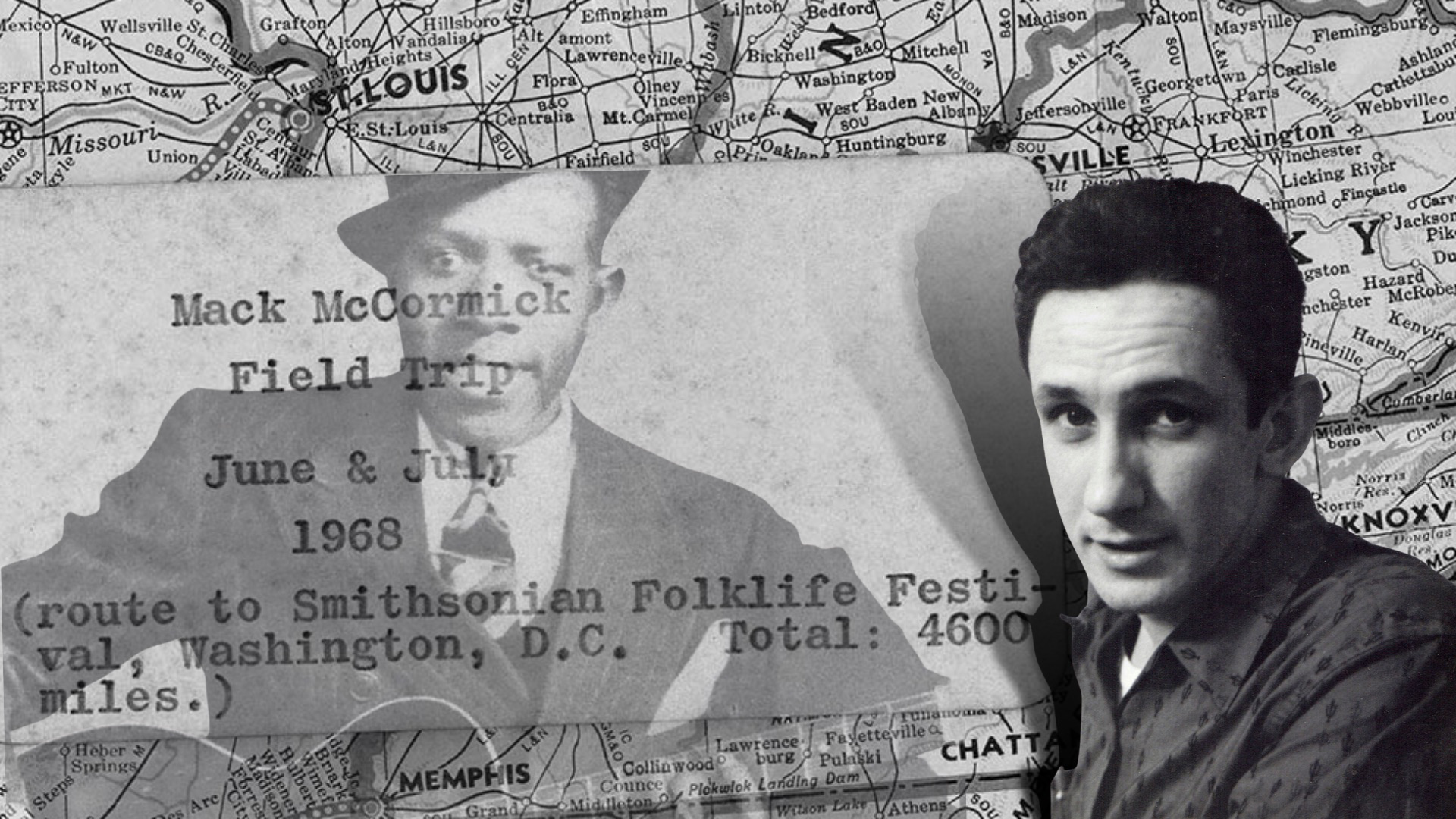
Hellhounds and Phantoms
The Smithsonian’s "Biography of a Phantom" answers countless questions — and raises countless more — about Robert Johnson, the Mississippi bluesman who legendarily sold his soul to the devil.
I went down to the crossroad, fell down on my knees
Asked the Lord above, “Have mercy, now save poor Bob, if you please...”
I’m standin’ at the crossroad, babe. I believe I’m sinking down.
— “Cross Road Blues,” Robert Johnson
When Robert Johnson recorded two takes of this song in 1936, nobody was calling him the king of anything. Then, in 1961, his song was reissued on an album called The King of the Delta Blues Singers, and it still went mostly unheard and unacknowledged. It wasn’t until 1968, when Eric Clapton and his band Cream sped it up, plugged it in, and immortalized it in a live recording, retitling it “Crossroads,” that the myth of Robert Johnson spread.
Johnson’s song was about a Faustian bargain, about this young Black man from rural Mississippi who had gone to that crossroads to sell his soul to the devil. He would return from that meeting transformed, on fire, with an urgency in his music that no one had ever heard before, from anyone. It was as if hellfire were coursing through his veins. And that hellfire would soon consume him, condemn him to eternal damnation, for that was the other part of the devil’s bargain, the pact that would end Johnson’s life just two years later, at age 27, little known and little heard. And that was pretty much what anyone knew about Robert Johnson, more of a myth than a man.
Johnson had remained shrouded in obscurity for some two decades after his death, until the folk revival of the 1950s led to a blues boom in the early 1960s, which brought so many artists who had been all but forgotten to a greater prominence than they had previously known. They had been young men making “race records” in the 1930s, and 30 years later, they were being revered as elder statesmen. Their audience, which had once been almost exclusively Black, was now increasingly white. The music they made had once been restricted largely to its home soil, the rural South, but now it was spreading through the urban North. The blues of Johnson’s era was being embraced throughout the country, by white college kids and festival crowds. Older bluesmen still living revived songs they had recorded when they were so much younger, before larger crowds than they could have ever imagined. The interest in these artists and their music became obsessive, at least among those determined to discover everything they could about that bygone era when music this great, this obscure, had been issued.
And the older artists shared stories about the ones who had died and the music they had made, including the myth about the mysterious Robert Johnson going down to the crossroads and selling his soul to the devil.
The myth gained a life of its own, particularly after rock bands started incorporating this inspiration into their own music. A younger generation of rock fans began discovering Johnson’s songs through the electric transformations of Cream, the Rolling Stones, Led Zeppelin, and others.
It wasn’t long before books and movies began capitalizing on the “Crossroads” myth, popularizing the story. Clapton kept the legacy alive by promoting his “Crossroads” festivals, with lineups of guitarists at the crossroads of blues and rock.
When you investigate the life and legacy of Robert Johnson, the metaphor of the crossroads continues to loom large — at the intersection of the living and the dead, of the rural South that spawned this music and the urban North that so dramatically expanded its reach, of then and now, of Black and white.
Today, tourism keeps the legend alive and growing, with Clarksdale, Mississippi, inviting blues fans and curious travelers to visit the Delta Blues Museum, the Ground Zero Blues Club, and to experience live blues 365 nights of the year. When you drive there on U.S. Highway 61 (which Visit Mississippi , the state government’s tourism agency, now calls “The Blues Highway”) and it intersects with Highway 49, you have reached the obligatory photo op: the apocryphal “Devil’s Crossroads.”
“Cross Road Blues” specifies no exact location and makes no mention of the devil, or a bargain. But it’s easy to hear in retrospect how the legend took hold, how the haunted urgency of a man possessed permeated so much of the music he recorded during that brief span before his death, how the terrors of “Hellhound On My Trail,” “Me and the Devil Blues” and “If I Had Possession Over Judgment Day” would seep deep into the souls of anybody who heard them. Once anybody heard them.
When you investigate the life and legacy of Robert Johnson, the metaphor of the crossroads continues to loom large — at the intersection of the living and the dead, of the rural South that spawned this music and the urban North that so dramatically expanded its reach, of then and now, of Black and white.
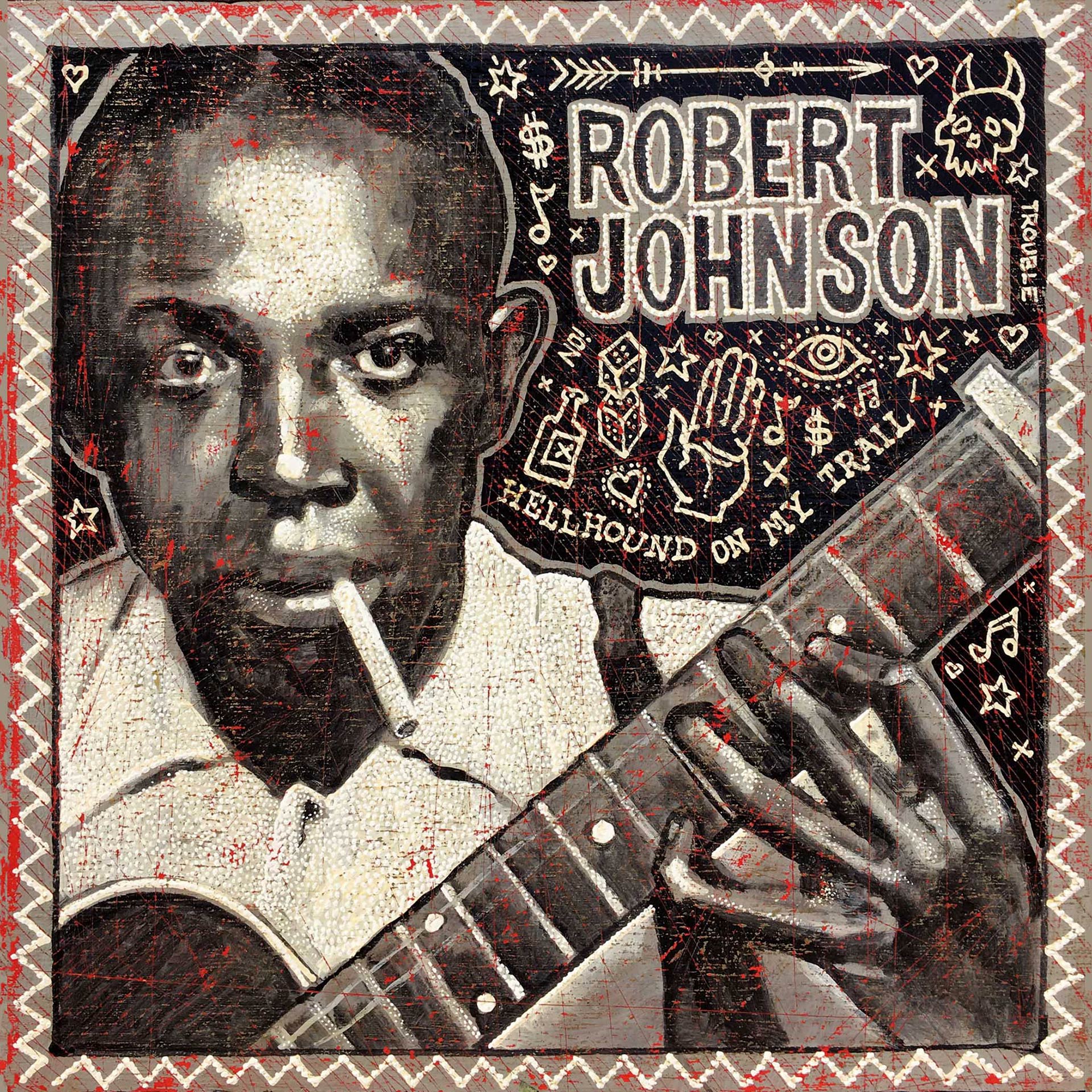
Two paintings of Robert Johnson by the Welsh-born, Chicago-based artist and musician Jon Langford (used by permission of the artist)
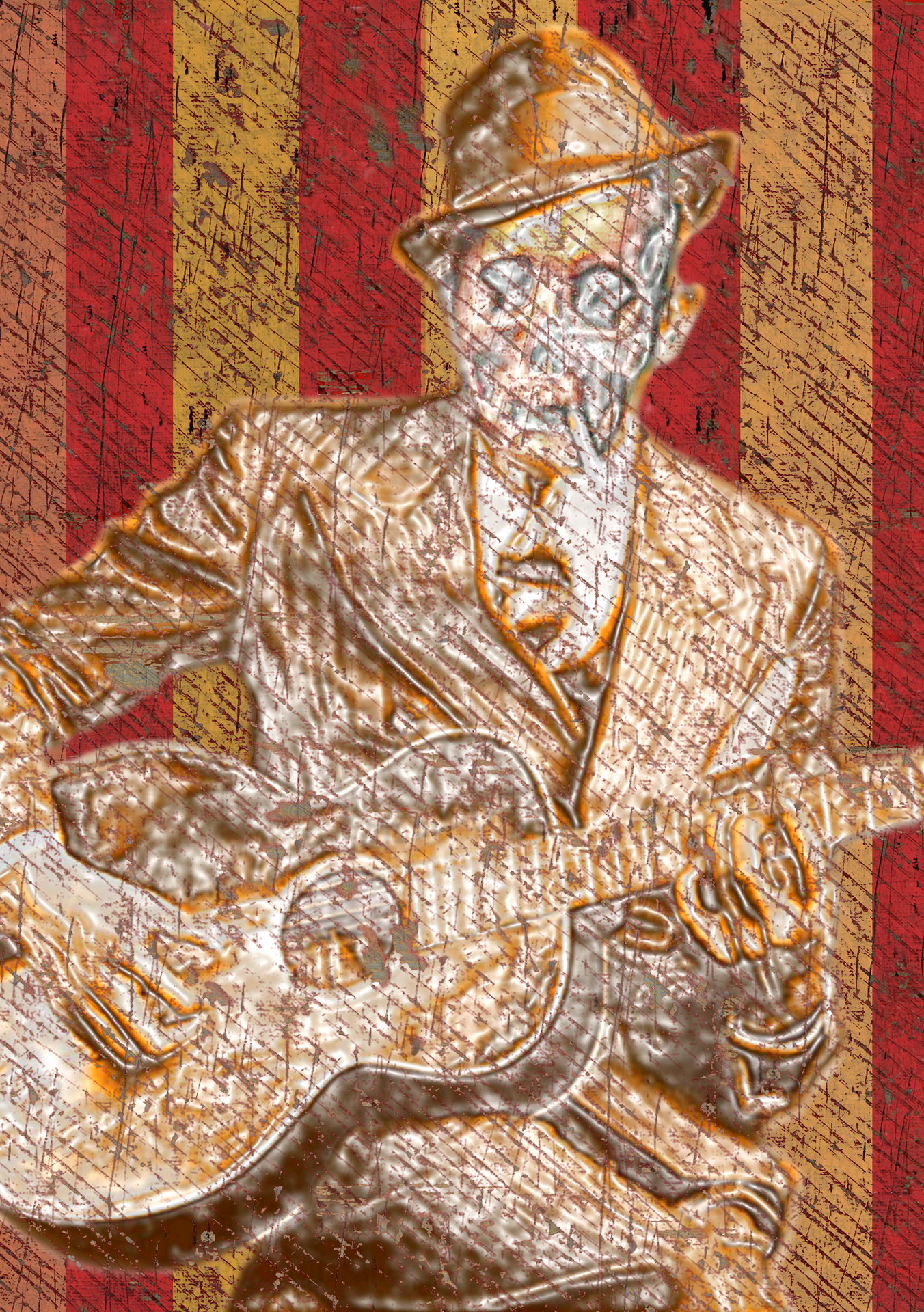
So how did an artist once so little known, about whose life we knew even less, inspire this myth that pretty much everyone now knows?
That story begins, arguably, with the record producer John Hammond, who had hoped to present Johnson at his legendary “From Spirituals to Swing” concerts at New York’s Carnegie Hall in December 1938. Hammond had reviewed Johnson’s 1936 recordings and loved them, and wanted to introduce the artist to a wider (and whiter) audience. It disappointed him to discover that the young bluesman had died just months before, apparently under mysterious circumstances.
Two decades later, Hammond assembled King of the Delta Blues Singers, the 1961 Columbia Records archival collection of Johnson’s recordings that inspired those young British musicians. Packaging that collection was a challenge, because there was no photo of the artist and little in the way of biographical information. The uncredited essay on the album jacket begins, “Robert Johnson is little — very little — more than a name on aging index cards and a few dusty master records in the files of a phonograph company that no longer exists.”
The cover illustration offered no distinguishing facial features — a view from above of a guitarist seated hunched over. Johnson was practically a tabula rasa. The musical performances were electrifying, but they might as well have come from a ghost.
And no one became more obsessed with that ghost than Robert “Mack” McCormick, an amateur folklorist from Houston, Texas. In the early 1970s, he embarked on an odyssey to discover whatever he could about Robert Johnson, determined to compile his research into a book for the Smithsonian Institution.
The title, McCormick resolved, would be Biography of a Phantom.
Back then, 50 years ago, the world knew pretty much nothing about Johnson, at least not definitively. When McCormick started his investigative journey, all that he really had to go on were the few sides of music Johnson had recorded before he died in the late 1930s, with lyrics that McCormick studied for clues. What towns did he sing about? Where was he from? Where did he go? How did he die? Who was he? Few people were even asking those questions back then, let alone looking for answers.
No one became more obsessed with Robert Johnson's ghost than Robert “Mack” McCormick, an amateur folklorist from Houston, Texas. In the late 1960s, he embarked on an odyssey to discover whatever he could about Robert Johnson, determined to compile his research into a book for the Smithsonian Institution.
McCormick chased the answers, but after a few years, his progress had slowed, and then stopped. The word spread that he was better at beginning than at follow-through.
In 1982, Peter Guralnick published a slim volume, really more of a long essay, titled Searching for Robert Johnson. It was an homage to McCormick — and at least partly an attempt to spur McCormick to finish and publish his own book.
“First, I’d like to acknowledge the trailblazing work of Mack McCormick, whose research is obviously the basis for much of this essay,” wrote Guralnick. “A great deal of the information included here is based on my interview with him in 1976, when publication of his book, Biography of a Phantom, seemed imminent. The book, when it appears, will, I am sure, fill in many of the gaps and should prove an enduring classic.”
Guralnick would later establish himself as Elvis Presley’s definitive biographer and a cultural resource for his historical and critical insight into Southern music. As for McCormick, his book, which had appeared imminent in 1976, seemed less imminent in 1982 and perhaps even a figment of its author’s imagination over the decades that followed. He became tangled in controversy with Johnson’s surviving family and with the record company that hoped to reissue more of his music.
Once a man determined to illuminate Johnson in all his musical glories, McCormick had become a major roadblock to those who were trying to get all of that music out, to have an even larger audience discover it. People accused him of attempting to exploit the legacy of a man he had initially celebrated, to benefit from the revenues that were accruing as Johnson attained a higher profile. He was part of a process, of white people capitalizing on Black artistry, that has since become labeled and widely condemned as “cultural appropriation.” An early hero within Johnson’s “rediscovery,” McCormick had become a villain in the eyes of many.
“I am the king of unfinished manuscripts,” he told Texas Monthly’s Michael Hall in 2002. He referred to his research archive as “the Monster,” an ever-growing collection on various blues, folk and other musicians, information that nobody else had, so much that it had become impossible for him to focus and frame it into manageable resources and narratives. McCormick’s own legend grew, but without a legacy of publication to document it.
McCormick himself seemed like something of a mystery, almost as mysterious as Johnson. He was apparently hoarding what he had and knew, rather than sharing it. Many said he was secretive, maybe even paranoid. He was brilliant, but he was strange. Some said he was bipolar, undiagnosed. He had moved “the Monster” to Mexico, but no, he hadn’t. Through the decades before his death of esophageal cancer in 2015, McCormick resisted discussion of Johnson and the quest that had obsessed him in the 1970s.
But now, 50 years after he began it and almost eight years after his death, Biography of a Phantom: A Robert Johnson Blues Odyssey will finally appear in bookstores on Tuesday, April 4, thanks to the Smithsonian Institution and its curator of American music, John William Troutman, who edited the book. Revelations abound within Biography of a Phantom. The foremost revelation is how good the book is: Almost nobody would have expected to see something so well-crafted, with such command of voice and tone, seemingly finished and fully realized.
The posthumous publication of the book, which the author himself insisted would never be published, provides us an opportunity to reflect on two strange legacies: not only Robert Johnson’s but also Mack McCormick’s.
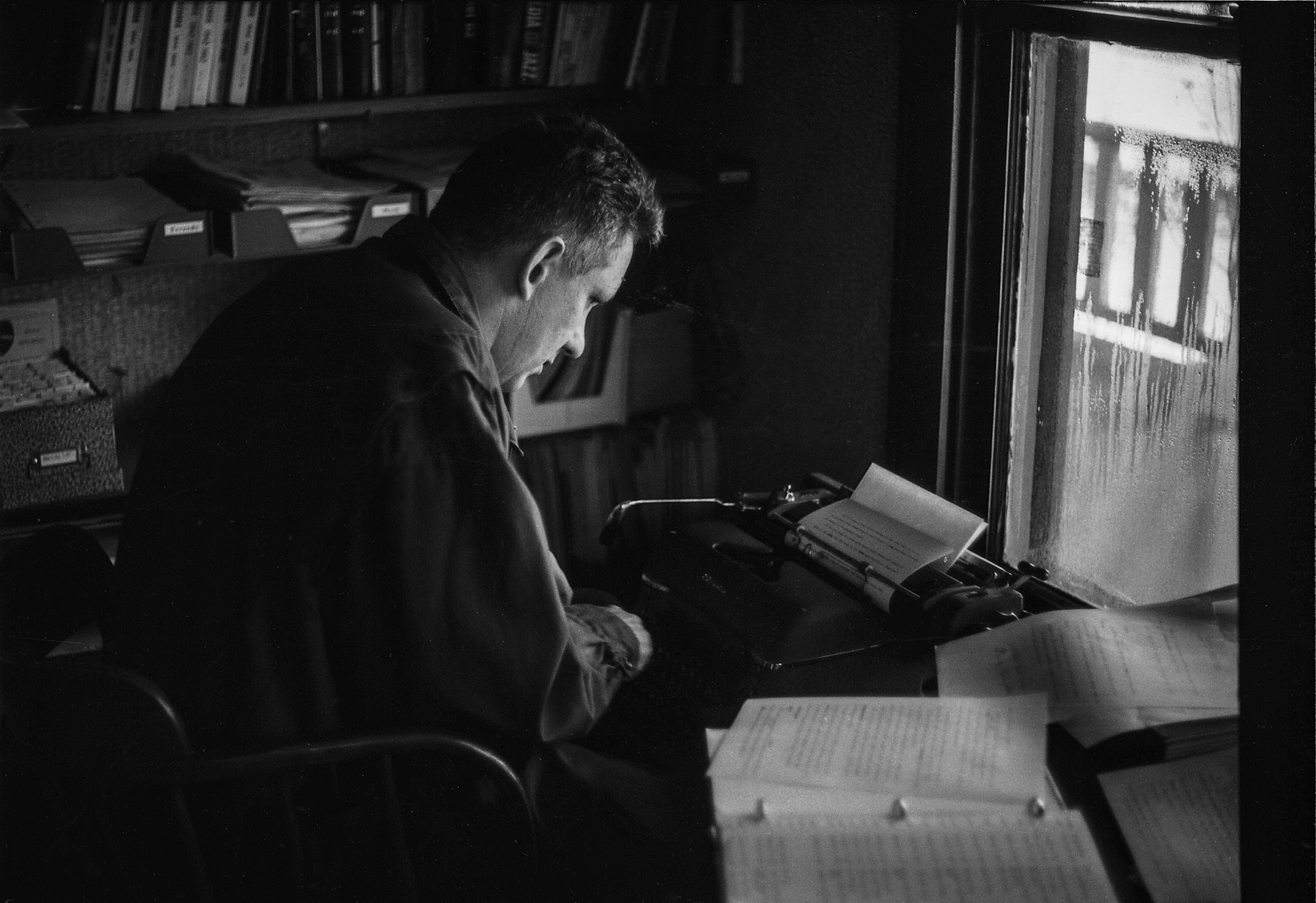
A Hellhound Named Mack
Born in Pittsburgh in 1930, to parents who divorced shortly after, Mack had moved all over the country with his mother. He never finished high school. He was reportedly more of a jazz buff as a teenager in Ohio, but he seemed innately curious about all sorts of colorful characters and subcultures. As The New York Times noted in its obituary, “His interest in vernacular culture in all forms easily transferred to music.” He held a series of odd jobs — as a carnival worker in Ohio and then as a taxi driver after moving south. He went door to door in Houston for the 1960 census, asking some questions for the government and others out of his own curiosity, mainly about music.
As Peter Guralnick told Texas Monthly, “Mack set out to live his life on his own terms with all the passion of someone who has made a vocation of his avocation. He pursued it in territories where there were no maps and no rules.” With nothing resembling a conventional career path, and with no academic training to pursue this work, he channeled his passion and dedication into discovering whatever he could about the blues throughout this region, and on Robert Johnson in particular.
Music followers said nobody knew more or had learned more about Robert Johnson than Mack McCormick. But he wasn’t telling, wasn’t sharing, wasn’t showing anybody what he had.
The respected music writer and critic Ted Gioia described McCormick as “the greatest living expert on Robert Johnson … a brilliant thinker — one of the smartest commentators on music I’ve ever met — but [he] was notoriously secretive and eccentric. He also had a strange writer’s block that prevented him from turning his thousands of pages of field notes into publishable manuscripts. Word of mouth among music writers was that McCormick knew all the details — more than anyone else who had ever researched Robert Johnson — even if he could never finish his long-awaited book.”
“The search for any answer can become an adventure, and the quest for Robert Johnson’s story offered a true mystery whose end was unpredictable.”
— Mack McCormick
It was a little like the legend of Joseph Mitchell at The New Yorker, who reportedly worked for years on a major project, suiting up and showing up at the magazine’s office, but with nothing ultimately to show for it. When Mitchell died, they found nothing. Had the challenge presented by Johnson proved insurmountable for McCormick? Had Biography of a Phantom existed only as a title, only in his head, if there?
McCormick had begun his quest in something of a vacuum — no photos, no documents, no internet where information was just a click away. There wasn’t even much in the way of an interstate highway system, which would make the driving faster but blur so many of the regional distinctions. Where McCormick was heading in the early 1970s, rural Mississippi, it might as well still have been the late 1930s. Oh, sure, there had been changes, but the pace was still slower, sleepier than so much of the rest of the country. Particularly the urban north, where the blues was booming.
There were no guarantees that any of the driving he did, the people he met, the questions he asked, would lead to any results. He wasn’t the only one on this quest to learn what he could about Johnson and other blues artists from earlier eras. But he might well have been the most dogged.
“The map offered me one of life’s rare treats: the prospects of unraveling a genuine mystery,” McCormick writes in the manuscript that he had pretty much kept to himself, the one that has now been packaged and published. “The search for any answer can become an adventure, and the quest for Robert Johnson’s story offered a true mystery whose end was unpredictable.”
The posthumous publication of Biography of a Phantom offers more from McCormick’s eyes, notes and perspective than had long seemed likely. The first glimmers of possibility began shimmering in November 2022, seven years after McCormick’s death at age 85. There was an announcement that his daughter Susannah Nix had donated a substantial portion of “the Monster” — including 590 reels of sound recordings and 70 cubic feet of manuscripts—to the Smithsonian’s National Museum of American History.
Highlighting the announcement was a statement from John Troutman, the museum’s curator of music and the editor of Phantom: “McCormick’s archive has long been of near-mythical proportions within research and music history circles, and it lives up to its promise. This archive yields revelations about the lives of many significant early- and mid-century blues artists — from Bernice Edwards and Robert Johnson to Sam ‘Lightnin’’ Hopkins and Mance Lipscomb — because of McCormick’s dogged research methods and his hundreds of interviews with artists and their families.”
So, great news, after decades of concern that all this would be lost. But not exactly a sign of imminent publication.
Seventy cubic feet of manuscripts! As well as all those recordings, interview transcripts, photos and whatever else McCormick had amassed. The announcement said this material would be accessible for scholars as soon as summer 2023 and that “throughout 2023, several yet-to-be-announced projects from multiple divisions of the Smithsonian, including from Smithsonian Folkways Recordings and Smithsonian Books, will feature selected material from this historic collection.”
There was no specific mention of Biography of a Phantom.
But little more than a month later, advance reading copies of the manuscript (in digital form) began circulating among reviewers, complete with a lengthy “Editor’s Preface” by Troutman and an extensive “Afterword” and notes. For those of us who had long been awaiting what we had come not to expect, that advance copy and the imminent publication seemed little short of miraculous. The book offers maps of McCormick’s expeditions east from Texas through the rural South, and dozens of photos he took along the way. The writing itself has a concision and clarity, a command of craft, detailing the odyssey of a man who had tried to accomplish something extraordinary, and was still coming to terms with whatever he had done.
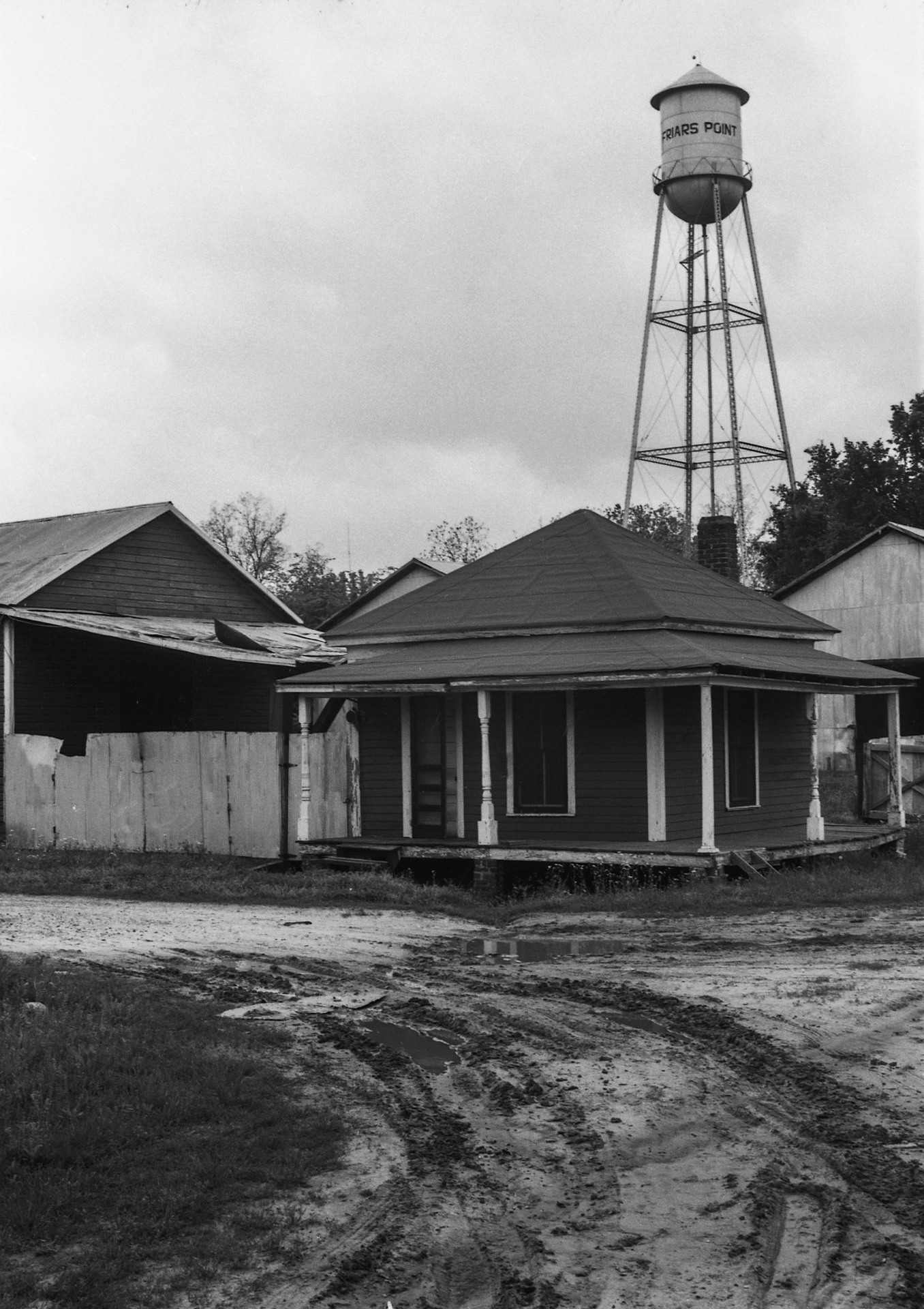
Who Is This Man, and Why Does He Care?
This draft opens with McCormick’s visit to Friars Point, Mississippi, where he’d traveled because Johnson had mentioned the town in a song.
“It’s not easy to find people here who remember anyone named Robert Johnson. But it’s not impossible, either,” he writes. “Hustlers and musicians and gambling people came in to circulate among the riverside taverns and party houses. Robert Johnson was part of that flow, and the people who lived in Friars Point knew him, if at all, as a passerby. They’re incredulous when they learn that strangers come here to ask about Johnson because he mentioned the town in a song, because of an old phonograph record.”
For McCormick, part of the difficulty of learning much of anything in Mississippi was that he was a white guy driving a car with Texas plates, a stranger in these parts, asking random members of a Black community about any memories of a man who might have passed through town maybe three decades earlier. A whole different era, but these folks would still be wary about a white stranger asking questions, figuring that any answers they offered might mean trouble for the man he was asking about, or trouble for them. There was no blue tourism back then, nothing to see here at all.
If this white stranger wasn’t the law, then who was he? And why was he asking about a phonograph record? The Black people he met, writes McCormick, were “not wanting any part of someone who was looking for somebody.” Back then, 50 years ago, all of Johnson’s music was not available, just a click away for anyone with a streaming account.
But today, in part because of McCormick’s pathfinding, you can follow the “Mississippi Blues Trail,” visit the “Devil’s Crossroads” and choose from among three possible burial sites to pay your respects. The path that McCormick traveled alone, the trails once blazed by a few obsessive blues fans and folklorists — this is all part of the tourism that the state of Mississippi now promotes.
McCormick was operating without markers and guideposts. He was a man nobody knew asking questions about a man that few remembered, who had made some records that few had bought or heard.
Back then, McCormick was operating without markers and guideposts. He was a man nobody knew asking questions about a man that few remembered, who had made some records that few had bought or heard. He wasn’t merely seeking something of value; he was crucial in helping establish that value. And this book goes a long way toward showing how he did it.
So many of the questions McCormick asked have been answered over the five decades since he made his initial pilgrimage. Thus, we don’t necessarily look to Biography of a Phantom to learn more about Johnson, but to learn about McCormick, about how he learned what he had, how he had focused and framed his narrative, even how and why he had abandoned it. Even then, he had made it as much about himself as the ghostly apparition he was chasing, about the challenges and struggles and dead ends, about the discoveries and epiphanies that would make the quest so worthwhile. At least at the time he was making them.
This published version draws from the early drafts McCormick had written around 1975, and the “Editor’s Preface” attests to the grandiosity of the author’s ambition. We don’t know how long afterward he continued to work on it, what additions he added in subsequent drafts, or why he gave up on it.
What we do know from this is that Mack McCormick had aimed big. General-interest, mass-market big. Bestseller big. He wasn’t trying just to engage the blues audience, the readers who would likely be most curious about Robert Johnson, though that audience had been growing and changing. He wanted to widen that net of potential readership.
“He wrote Biography of a Phantom as a crime thriller targeted to a general audience and inspired by Truman Capote’s 1966 nonfiction murder novel In Cold Blood,” writes Troutman in the “Editor’s Preface.” “He deliberated over the pacing of the book and its character development, including his own. He developed a voice that seemed tempered and wise.”
Troutman adds, “Yet it adheres most closely to his original intention, namely, to cast his pursuit of information on the life and death of Robert Johnson as an odyssey of personal discovery.”
Reading the book in light of the Capote comparison adds illuminating perspective. The author as outsider, in a land not his own, a character in his own narrative. His questions of those in a community whose trust he must earn, and might never earn. The false starts, the dead ends. The building toward a murder, and the mystery of whodunit. And why. He writes with a masterful control that is pretty much devoid of writerly affectation. And he has documented his pilgrimage with abundant snapshots and notes and annotated maps. If the search for Johnson and other early blues artists was a treasure hunt, this posthumous publication is a treasure trove.
“From the outset Johnson’s life presented a mystery,” writes McCormick. “His songs continually made reference to towns along the Mississippi River, but they’d been recorded in Texas, in two different cities eight months apart.”
The amateur detective noted the songs and plotted the towns referenced on a map, looking for paths and clusters. When he visited those towns, most of those he questioned did not know who he was talking about, this bluesman who might have passed through there decades earlier. Or maybe they did remember, but didn’t trust the stranger asking the question. Or they might definitely remember something, but not much, because they said this man some called “Bob Johnson” was pretty unassuming, nondescript, not the type to call attention to himself.
Why persist? Why was this important? Because that 1961 reissue had sparked an interest in music that was undeniably great, impassioned, important, from a singular artist who nobody seemed to know much about. And the folk boom of the 1950s and early ’60s had so significantly expanded interest in the blues, while the music itself was in the midst of a transformation to an electrified, urban version that still had a strong connection to its Delta roots.
As McCormick writes, “Something especially direct and vital had been happening in Chicago…. It was a new sound, and yet it owed a large debt to Robert Johnson…. The pacesetters in Chicago included Elmore James and Muddy Waters, men only a few years younger than Johnson, but whose formative years had been marked by his influence.”
“I Believe I’ll Dust My Broom” was one of the handful of songs Johnson had recorded during his brief life. The electrified version by Elmore James would give the blues one of its most enduring and stirring guitar riffs. “Sweet Home Chicago” was another of the songs recorded by Johnson, and it would emerge as a musical anthem for the city, played by every bar band with one foot in the blues.

The Great Blues Flip-Flop
So by the time McCormick had embarked on this quest at the turn of the 1970s and certainly before he had begun writing this draft in 1975, interest in Johnson had expanded and intensified well beyond what the author calls “a tiny group with an obscure special interest.” This was living history with plenty of contemporary relevance, this interest in music as it had moved from the rural South to the urban North, from acoustic to electric, from “race records” heard mainly by Black listeners to a seminal influence on the biggest of white rock bands, the Rolling Stones and Led Zeppelin foremost among them. This quest by McCormick and others was a search for keys that might unlock so many doors.
And it occurred during a period when the music itself was undergoing such a profound sea change. It had long been exclusively Black music — by Black artists, from Black communities in the rural South, for Black listeners. Now, the demographic had flip-flopped. The audience for the blues had somehow become predominantly white, as were many of the emerging artists, almost all the most popular ones.
By the mid-’70s, Black listeners and the radio formats targeting them had seemed to dismiss blues as an anachronism, like whatever else their grandparents had brought with them from the rural South decades ago. Muddy Waters was almost as far from the experience of the young Black listener devoted to soul, R&B, funk, whatever, as, say, Benny Goodman was from the sensibility of the modern rock fan.
Whatever blues-based artistry that had still found favor in urban Black communities — the more sophisticated vocal stylings of Tyrone Davis, Little Milton, even Bobby “Blue” Bland — was no longer considered “real” blues by the young white rockers who had become so passionate about the blues, the ones who carried the torch and pledged their musical allegiance. And the Black blues artistry that might see continued popularity in Southern Black circles — like Z.Z. Hill with his “Down Home Blues” and the flamboyant Bobby Rush — never gained as much toehold among the rock fans up north.
The likes of McCormick had been part of that shift from Black to white, during the early pivot. The Editor’s Preface to this posthumous publication opens with an introduction to the “Blues Mafia,” a term which it says conveys “awe as well as disdain.” The members of that “mafia” in the 1950s and the ’60s were white blues obsessives, the ones who did the research, made the pilgrimages, wrote the books and the liner notes, who established the standards as to what was blues greatness, or what was blues at all.
“Once the Blues Mafia sought to discover his story, decades after his death, the question of who Robert Johnson was and was not emerged as a highly contested and eventually lucrative terrain for white writers, musicians and critics. All the while, his family, having no idea of this eruption of interest in his work, was left in the dark until Mack McCormick knocked on their doors.”
— John Troutman
“Once the Blues Mafia sought to discover his story, decades after his death, the question of who Robert Johnson was and was not emerged as a highly contested and eventually lucrative terrain for white writers, musicians and critics,” writes Troutman in that preface. “All the while, his family, having no idea of this eruption of interest in his work, was left in the dark until Mack McCormick knocked on their doors.”
You won’t read about that from McCormick in this published manuscript, though he surely wrote about it. Back when McCormick was doing his work, the culture at large wasn’t looking through the lens of “cultural appropriation.” Whatever capital there was to be mined from the music of Johnson was largely because of this obsessiveness from what McCormick had called the “tiny group” of white folks who were devoting much of their passion and most of their lives to it. The magic was in the music, but the music would have continued to go mainly unheard were it not for Hammond and the reissue, McCormick and the pilgrimage, and the rock musicians who had elevated the previously obscure bluesman to a level of veneration, even worship.
When we consider McCormick’s work, its value and its legacy, we have to cross through many dimensions. We are even farther away from the 1970s, when McCormick was conducting his investigation and writing about it, than McCormick was from the 1930s he was investigating. We have to conjure both eras through his writing, remembering an era (or recreating an era we can’t remember) when blues was rural Southern Black music, and Johnson’s music was remembered (if remembered at all) by those who had heard him perform at the time or heard one of his recordings that hadn’t really sold much at all.
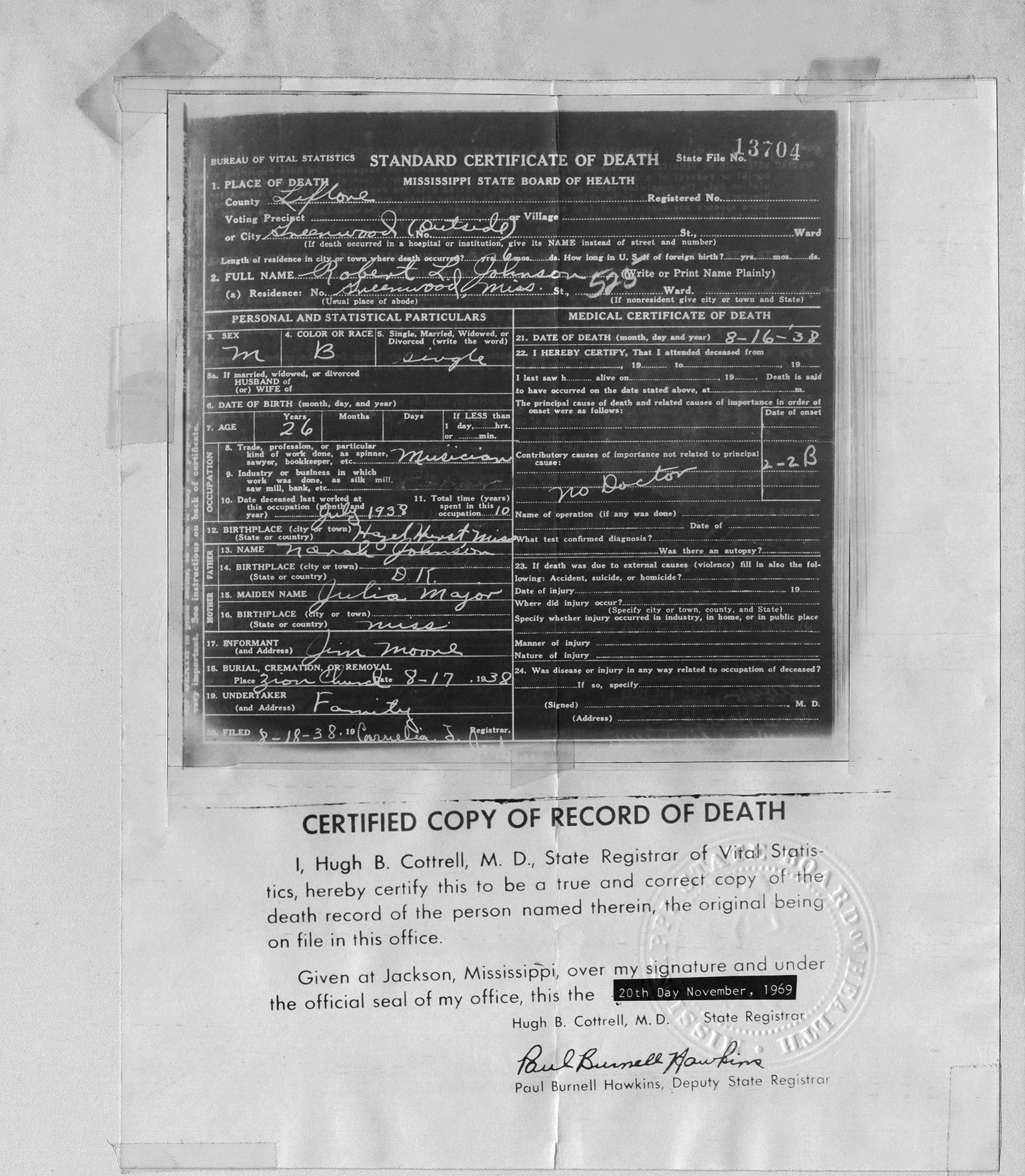
The Dark Side of McCormick’s Obsession
As he followed his compulsion, McCormick made a crucial discovery, when information from the Mississippi neighbors he had found led him to locate two of Johnson’s sisters, Carrie Thompson and Bessie Hines, who had moved north to Maryland. In the spring of 1972, he found them and persuaded them to work with him on a book that would increase the value of Johnson’s legacy and their share of it. Or so he told them.
The ”Afterword” by Troutman paints a darker portrait of McCormick — likely a thief, a forger, an exploiter, someone who would prey on the trust of two women who really did not know what they had gotten into. It reflects what Troutman calls “an archivally driven reconstruction of the brutal aftermath — the bad dealings and tragedies that occurred in the wake of McCormick’s research and writing of the manuscript.”
The revelations from McCormick reward the decades of anticipation, but the revelations of the context surrounding his efforts — the before and after, the duplicity, the attempts to benefit financially at the expense of Johnson’s sisters — all cast a shadow over his efforts. And underscore some ambivalence from the Smithsonian concerning this publication. You might expect them to herald this title that had seemed apocryphal as a triumph, a miracle, a treasure. Instead, the publisher casts plenty of aspersions on its author, in anticipation that others might. It builds the case that he was duplicitous, even a thief and a liar, in his dealings with both the sisters and Columbia Records. McCormick felt he had staked his claim on the Johnson legacy, and he was desperately doing whatever he could to protect his own interest.
“This book, then, ultimately is less about the life of Robert Johnson than it is about the human hellhounds and psychological phantoms that affected everyone involved.”
— John Troutman
“This book, then, ultimately is less about the life of Robert Johnson than it is about the human hellhounds and psychological phantoms that affected everyone involved,” writes Troutman. By “this book,” he doesn’t just mean McCormick’s manuscript, as edited for publication, but all the contextual illumination in the preface and afterword, with material that was also gleaned from the archive, “the Monster,” which McCormick most certainly wouldn’t have wanted discovered and published.
What happened after he found the sisters would make for another book of considerable interest. What we have in Troutman’s afterword tells a very different story. McCormick had found the sisters in spring of 1972, got them to share some family photos with him and to agree to cooperate with interviews for a book that he promised would reward them as Johnson’s “rightful heirs.” Then he left, with photos he never returned, and with no subsequent contact with them about the book he’d discussed. Sister Bessie Hines was in poor health, would soon die, and sister Carrie Thompson served as her caretaker.
In June 1973, another blues researcher, Steve LaVere, contacted Carrie and made similar proposals for share-the-wealth cooperation on a book. She gave him a different photo, consented to an interview, and signed an agreement with him. It was only then that McCormick came back into the picture, saying he had a signed agreement that superseded the one she had made with LaVere.
The latter made a pitch to Columbia Records for an even more elaborate reissue of Johnson’s music, heavily annotated and illustrated. Thompson assigned all rights from the Johnson material to LaVere — recordings, photos, her stories and interviews with him. And things continued to get messier, darker and weirder, as McCormick became more desperate about holding on to what he thought he had. He’d once wanted to bring Johnson, his music and his story to the widest audience possible; now he wanted to shut everything down. If he couldn’t profit from Johnson, no one would.
And thus, writes Troutman, “In the years that followed, no one prospered. McCormick made sure of it.” Columbia had plans to release a three-volume deluxe edition of Johnson’s music in 1975, but McCormick’s threats kept that release in legal limbo for 15 years, based on signed agreements that his archives suggest were doctored and forged. The CD era and the proliferation of boxed sets finally made the prospects of releasing this music too lucrative to resist, and the label ultimately called McCormick’s bluff.
The 1990 set of Robert Johnson: The Complete Recordings put a brighter spotlight on his music than ever. Three compact discs, handsomely packaged, were elaborately annotated and illustrated through a 47-page booklet. Steve LaVere was credited as co-producer of the reissue, author of the extensive biographical essay and holder of the copyright on the Johnson photos. A few others got “special thanks.” Peter Guralnick’s Searching for Robert Johnson, a book that he said would not exist without McCormick’s research, was singled out.
There is no mention of McCormick and what Guralnick had called his “trailblazing work.” McCormick’s legal threats amounted to nothing, and he apparently never saw a dime from the release. The set sold a phenomenal million-plus copies, despite a list price that was ten times or more than the cost of that initial vinyl release.
So there were reasons why a bitter, embattled and paranoid McCormick had shut down his Johnson book project, apparently never to revisit it or discuss it in any detail. Yet his name and Johnson’s, and their respective reputations and legacies, would forever be prominently linked. But not on the compact disc set, which McCormick had done so much to prohibit and which had written him out of Johnson’s history.
McCormick’s death and his daughter’s donation of a substantial part of his archives to the Smithsonian have let some sort of genie out of the bottle. It’s likely that Biography of a Phantom would have never seen publication in any form were the author still alive. And he absolutely would not have wanted his archives combed for evidence that might have embarrassed him, though his daughter recognized that this was a genuine possibility, whatever the effects on his legacy.

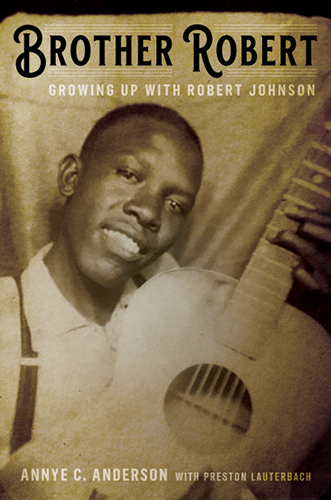
Baby Sis Gets Her Say
As the preface makes plain, the publication from the Smithsonian also pays deference to another recently published book, 2020’s Brother Robert: Growing Up With Robert Johnson by Annye C. Anderson, identified as “Baby Sis” to Robert and her older sisters. Her memoir humanizes her brother, rescues him from myth, and demonizes the white blues obsessives who exploited him. The way she tells it, the family lost Robert twice — first to the poison of a jealous murderer, and later to the likes of vultures such as McCormick and LaVere, who swooped down to pick those bones clean.
It's a slim volume, the memories of a woman who was very young when she knew Robert, but who is now 96 years old. She was 93 when the book was published. But she has a compelling, engaging voice and a singular story to share. Writes editor Troutman, “Mrs. Anderson’s book was published after the museum had acquired, processed, and begun making decisions in the archive pertaining to her family. Her book, however, has profoundly influenced the questions that organized our undertaking of this volume.”
One of those central questions is how much McCormick exploited her family, stole from them, cheated them. This raises larger issues of cultural appropriation, of white people calling the shots on the blues, running the show.
A half-century ago, when McCormick was conducting his research and writing his draft, blues revivalism was considered a cultural enrichment. Black performers reaped plenty of benefit, in terms of career longevity and security, but there’s no way that, say, a Willie Dixon could ever take away as much monetary reward as Led Zeppelin had when they’d claimed one of his songs as their own. Buddy Guy would offer gratitude to the likes of Clapton, the Stones and Stevie Ray Vaughan, but he couldn’t charge the ticket prices they did, or draw crowds the size of theirs. White folks ran the business — from record labels to the touring venues — and white folks dominated the audience. White dollars greased the machinery.
“Reading Mrs. Anderson’s version, I’m struck by how very few of these stories have been told by African Americans who were directly involved. Virtually the entire history of the ‘blues revival’ has been written by white fans and even the most sympathetic are writing from outside that culture.”
— Elijah Wald
So the publication of this book (and Brother Robert before it) reopens a whole can of worms for contemporary readers. Writes music scholar Elijah Wald in the foreword to Brother Robert: “Reading Mrs. Anderson’s version, I’m struck by how very few of these stories have been told by African Americans who were directly involved. Virtually the entire history of the ‘blues revival’ has been written by white fans and even the most sympathetic are writing from outside that culture.”
Even Wald. Even McCormick. Even me. Maybe even you. How should we consider those who love the blues so much that they have continued to write and read about it, perform it, buy albums and concert tickets and support it for decades? If their skin is other than Black, do they deserve credit as cultural preservationists or blame for cultural carpetbagging?
No easy answers, and Biography of a Phantom isn’t either/or answer. It plainly has the Smithsonian treading lightly and carefully. McCormick didn’t want it published; likely Johnson’s family wouldn’t welcome publication. Yet there’s considerable value in having it out — musical, cultural, literary. It doesn’t read like the work of a man who was after the pot of gold at the end of the rainbow. And whatever gold there might be was largely because of the devotion of Hammond, McCormick and others who had revived so much interest in this obscure music that so many had never heard.
So, Biography of a Phantom loses McCormick’s “discovery” of Johnson’s sisters and whatever interview material he got from them. The Smithsonian seems to want to thread the needle here, doing its best to avoid charges that the Institution itself exploiting the family. Perhaps it is, but this publication based on the author’s early drafts is more McCormick’s story than Johnson’s. The story from the perspective of the Johnson family is very different.
“What happened to my family must be the greatest example of a white man stealing a Black man’s soul,” writes Anderson. She is specifically referring to LaVere, but plainly indicting McCormick in this process as well. The difference between the two is that the former had prevailed, had succeeded in what the family felt McCormick had attempted.
“LaVere had begun to get desperate,” she writes. “Mack McCormick was trying to block the release of the Robert Johnson record. He claimed that he owned the biographical material about Brother Robert that the album contained. He also said he’d found other heirs.”
Upon the release of the CD set, music historian Robert Gordon noted, “Greed wasn’t likely LaVere’s original motivation. When he proposed the Complete Recordings package in 1973, neither the blues audience nor Robert Johnson’s popularity was very large. Johnson wasn’t making anybody rich. In the beginning, LaVere was, probably, just a fan — an energetic, obsessive, hustling blues lover. But as Johnson became a bigger part of his life, LaVere began blurring the line between fan and artist. By putting his copyright on the songs and photographs, LaVere owns the Johnson that survived.”
As Gordon shows, Johnson had made no one rich off his original recordings, or even the initial reissue after his death. The music was Black, but it was white folks — the “Blues Mafia,” John Hammond and Columbia Records, the rock bands, the white audiences — that established the goldmine. The music had been Southern and rural, but the money flowed to Northern cities.
In the process, everything got uglier over the question of who “owned” what and who was owed. LaVere had proposed that he should get copyright over all of Johnson’s compositions (previously credited as “public domain”), and then split with Carrie Thompson the windfall that covers by Eric Clapton, the Stones and whoever else was likely generating. LaVere, Thompson and McCormick all lawyered up, and Columbia shelved the entire project for 15 years, until the CD era made the potential reward lucrative enough to take the risk.
Former Columbia A&R person Jim Fishel, who picked up the dormant project in 1976, told Gordon, “It got to be a running joke. We used to go to a product meeting every week, the various departments. We’d get to Robert Johnson, and they’d look at me. We’d start to laugh, and they’d table the discussion and it would go on to the next meeting. I had the same cover [as that released in 1990] on my wall in my office back in 1977. It was done, just sitting and waiting. It had catalog numbers and everything.”
In retrospect, Anderson writes, “I understand Steve LaVere has gone on [he died toward the end of 2015, outliving McCormick by a few months], and Mack McCormick, too. But there are others and always will be: white men who don’t know us and think they own us. Steve LaVere might be resting in a golden casket that Brother Robert bought him.”
Same as it ever was.
Ceaseless Entanglement
The world was enriched by the belated issue of Johnson’s CD collection. It will be enriched again by the posthumous publication of Biography of a Phantom, which should generate considerable interest and revenue.
It will be followed in August by the first recordings issued from McCormick’s “Monster” archives — a fully annotated set of “field recordings,” on three CDs or six vinyl LPs, featuring Mance Lipscomb and Lightnin’ Hopkins among plenty of more obscure artists. There are 66 performances, none previously available to the public.
So, who owns what? Who is exploiting whom? The posthumous activity from the McCormick archives won’t settle much of anything and is more likely to stir things up. The Smithsonian anticipates such questions, even challenges, and has attempted to address them before others raise them. It wants to be sure that we perceive it as being on the right side of history. After the publication of Brother Robert established the family’s perspective and reinforced the battle lines, the book’s publisher wants to show that it is on “Team Johnson” rather than “Team McCormick.”
Hence its seeming ambivalence toward its relationship with McCormick, a relationship that began even before he embarked on such an ambitious and seemingly doomed biographical project. McCormick had enjoyed significant benefit from his Smithsonian credentials, which he employed even when he wasn’t specifically working for the institution.
“The Smithsonian, of course, has been implicated in McCormick’s story since the late 1960s,” acknowledges the afterword. “McCormick used pay from his contracted work for the Smithsonian Folklife Festival to subsidize his fieldwork on Robert Johnson. In addition, he brandished the name of the Smithsonian while pursuing his Johnson research when the Smithsonian had not authorized him to do so.”
Whatever moral shortcuts he took, McCormick was very good at his work. Ralph Rinzler, the Smithsonian assistant secretary emeritus who brought McCormick into the Institution, told Robert Gordon, “He’s an excellent field worker, an excellent writer, and an excellent idea person. He’s meticulous and determined in his pursuit of information.”
All that is much in evidence here. The Biography of a Phantom arrives way too late to provide its author with a golden casket. And it arrives in an era that is particularly and properly sensitive to cultural appropriation, to diversity, to “discovery,” to profiting from a legacy that is not your own. And it’s clear in the music: The blues that Robert Johnson had made for his own community — the music that his Black neighbors remembered so fondly — is a far cry from the high-voltage versions of his music that rock bands have played to stadiums full of white fans.
Since all this reflection has been renewed by the publication of a book that its author hadn’t wanted published, aimed at a readership that might well be discovering Robert Johnson fresh, let’s leave the last word to the Smithsonian, to the final paragraph of Troutman’s afterword:
“We might ask, in conclusion: To whom does this book belong? Who owns its stories, and who decides? A specific rationale drove our decision to edit, frame and publish McCormick’s book in this manner: we imagined that his true life’s work might ultimately come down not as much to his interpretive revelations on Robert Johnson or the blues, but rather to his role in amplifying the critical, ongoing conversations and dilemmas that churn around these questions. Biography of a Phantom is on the one hand a testament to Mack McCormick’s extraordinary reach and tenacity as a researcher and writer, and on the other hand it is a disturbing cautionary tale on the profoundly complex, at times harrowing, and sometimes haunting practice of telling (or selling) others’ stories. Emerged from a vast archive filled with evidence to support either contention, it is both things, in ceaseless entanglement, surrounded by hellhounds and phantoms.”
Before joining the journalism faculty of the University of Iowa, Don McLeese was an award-winning music journalist. He was the popular-music critic at the Chicago Sun-Times and the Austin American-Statesman, senior editor at No Depression and a frequent contributor to Rolling Stone. His work has also appeared in publications including the New York Times Book Review, The Washington Post, The Oxford American and Entertainment Weekly. His most recent book is a recovery memoir, Slippery Steps: Rolling and Tumbling Toward Sobriety. He has written three previous books, including Dwight Yoakam: A Thousand Miles From Nowhere.

